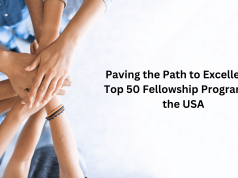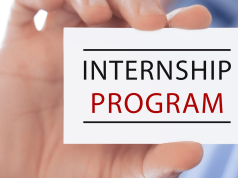Navigating the myriad options for financial aid can be overwhelming for undergraduates. To help ease this process, The Work Times presents “Apprenticeship Goldmine: 50 Government Student Aid Programs to Get You There,” a comprehensive guide to the top 50 Federal Student Aid programs available today. Our team has carefully evaluated these programs based on their accessibility, the scope of financial support provided, and the specific needs they address. Whether you’re aiming for a career in STEM, healthcare, education, or the arts, there’s a student aid program designed to help you achieve your academic goals without the burden of overwhelming debt.
Federal Pell Grant – For low- and middle-income undergraduate students.
The Federal Pell Grant is a need-based grant awarded to low- and middle-income undergraduate students who have not earned a bachelor’s or professional degree. The amount awarded depends on the student’s financial need, cost of attendance, and enrollment status. It does not need to be repaid.
Iraq and Afghanistan Service Grant – For students whose parent or guardian died as a result of military service in Iraq or Afghanistan after 9/11.
The Iraq and Afghanistan Service Grant is available to undergraduate students whose parent or guardian died as a result of military service in Iraq or Afghanistan after 9/11. Students must be ineligible for a Federal Pell Grant based on their Expected Family Contribution but meet the remaining Pell Grant eligibility requirements. The grant provides funds to help pay for education expenses.
The TEACH Grant provides financial aid to students who plan to become teachers in high-need fields at low-income schools. Recipients must agree to teach for at least four years within eight years of completing their program. If the service obligation is not met, the grant converts to a Federal Direct Unsubsidized Loan, which must be repaid with interest.
Federal Supplemental Educational Opportunity Grant (FSEOG) – For students with exceptional financial need.
The FSEOG is a need-based grant for undergraduate students with exceptional financial need. It is awarded on a first-come, first-served basis, with priority given to Pell Grant recipients. The grant is funded by federal and institutional sources and does not need to be repaid.
Academic Competitiveness Grant (ACG) – For first- and second-year undergraduates who completed a rigorous high school program.
The Academic Competitiveness Grant (ACG) was designed for first- and second-year undergraduate students who completed a rigorous high school program. Eligible students must be U.S. citizens, enrolled full-time in a degree program, and recipients of the Federal Pell Grant. First-year students could receive up to $750, while second-year students could receive up to $1,300 if they maintained a cumulative GPA of at least 3.0. This program aimed to encourage students to take challenging courses in high school and succeed in college.
National Science and Mathematics Access to Retain Talent (SMART) Grant – For third- and fourth-year undergraduates in science, technology, engineering, or mathematics (STEM) fields.
The National SMART Grant was available to third- and fourth-year undergraduate students majoring in science, technology, engineering, mathematics (STEM), or certain foreign languages deemed critical to national interest. Eligible students had to be U.S. citizens, enrolled full-time, recipients of the Federal Pell Grant, and maintain a cumulative GPA of at least 3.0. The grant provided up to $4,000 per year to encourage students to pursue high-demand fields in the global economy.
Children of Fallen Heroes Scholarship – For Pell-eligible students whose parent or guardian died in the line of duty as a public safety officer.
The Children of Fallen Heroes Scholarship provides financial aid to Pell-eligible students whose parent or guardian died in the line of duty as a public safety officer. Eligible students receive the maximum Federal Pell Grant award and may also qualify for additional federal student aid. This program aims to support the educational aspirations of students who have lost a parent or guardian serving as a public safety officer.
Loans
Direct Subsidized Loans – For undergraduate students with financial need; interest is paid by the government while in school.
Direct Subsidized Loans are available to undergraduate students with demonstrated financial need. The U.S. Department of Education pays the interest on these loans while the student is in school at least half-time, during the grace period, and during deferment periods. This helps reduce the overall cost of borrowing for students with financial need.
Direct Unsubsidized Loans – For undergraduate, graduate, and professional students; interest accrues while in school.
Direct Unsubsidized Loans are available to undergraduate, graduate, and professional students regardless of financial need. Unlike subsidized loans, interest on unsubsidized loans accrues while the student is in school, during the grace period, and during deferment periods. Borrowers are responsible for paying all the interest that accrues.
Direct PLUS Loans are available to graduate or professional students and parents of dependent undergraduate students to help pay for education expenses not covered by other financial aid. Eligibility is not based on financial need, but a credit check is required. Borrowers are responsible for all interest that accrues on PLUS loans.
Direct PLUS Loans – For graduate or professional students and parents of dependent undergraduate students.
Direct Consolidation Loans allow borrowers to combine multiple federal student loans into a single loan with one monthly payment. This can simplify repayment and may result in a lower monthly payment by extending the repayment period. However, it may also increase the total interest paid over the life of the loan.
Direct Consolidation Loans – For combining multiple federal student loans into one loan.
Direct Consolidation Loans allow borrowers to combine multiple federal student loans into a single loan with one monthly payment. This can simplify repayment and may result in a lower monthly payment by extending the repayment period. However, it may also increase the total interest paid over the life of the loan.
Federal Perkins Loan – For students with exceptional financial need; administered by the school.
The Federal Perkins Loan program provided low-interest loans to undergraduate and graduate students with exceptional financial need. These loans were administered by the schools participating in the program. Borrowers could receive up to $5,500 per year as undergraduates and up to $8,000 per year as graduate students. Note that the Federal Perkins Loan program expired in 2017, and no new loans have been issued since then.
Work-Study
Federal Work-Study Program – Provides part-time jobs for undergraduate and graduate students with financial need.
The Federal Work-Study Program provides part-time employment opportunities for undergraduate and graduate students with financial need, allowing them to earn money to help pay for their education expenses. The program encourages community service work and work related to the student’s course of study. Jobs can be on-campus or off-campus, and the wages earned are typically used to cover educational costs such as tuition, books, and living expenses. This program aims to promote access to higher education by reducing the financial burden on students.
Specialized Programs
Federal Family Education Loan (FFEL) Program – Includes Stafford Loans, PLUS Loans, and Consolidation Loans (ended in 2010).
The FFEL Program provided loans to students and parents through private lenders, with the federal government guaranteeing the loans. It included Stafford Loans (both subsidized and unsubsidized), PLUS Loans, and Consolidation Loans. The program ended in 2010, but many borrowers still have outstanding FFEL loans.
Health Professions Student Loans (HPSL) – For students in health profession programs.
HPSL offers long-term, low-interest loans to full-time students pursuing a degree in dentistry, optometry, pharmacy, podiatric medicine, or veterinary medicine. The program aims to increase the number of healthcare professionals in these fields.
Nursing Student Loans (NSL) – For students in nursing programs.
NSL provides long-term, low-interest loans to students pursuing a degree in nursing. This program helps address the shortage of qualified nurses by making nursing education more affordable.
Primary Care Loans (PCL) – For medical students who commit to primary care.
PCL offers long-term, low-interest loans to full-time students pursuing a degree in allopathic or osteopathic medicine. Recipients must commit to completing a primary care residency and practicing primary care for a certain number of years after graduation.
Loans for Disadvantaged Students (LDS) – For students from disadvantaged backgrounds in health professions.
LDS provides long-term, low-interest loans to full-time, financially needy students from disadvantaged backgrounds pursuing degrees in health professions. This program aims to increase diversity in healthcare professions and improve access to healthcare in underserved communities.
Indian Health Service Loan Repayment Program – For health professionals serving in Indian health programs.
This program provides up to $40,000 in loan repayment assistance for health professionals who commit to working in facilities serving American Indian and Alaska Native communities. It requires a minimum two-year service commitment and is open to various health professions, including physicians, nurses, and dentists.
National Health Service Corps (NHSC) Loan Repayment Program – For primary care providers working in underserved areas.
The NHSC Loan Repayment Program offers loan repayment assistance to primary care medical, dental, and mental health clinicians in exchange for working in urban, rural, or tribal communities with limited access to care. Full-time participants can receive up to $50,000 for a two-year commitment, with the possibility of continued service to pay off all student loans.
Public Service Loan Forgiveness (PSLF) – For borrowers working in public service jobs.
While not directly mentioned in the search results, PSLF generally forgives the remaining balance on Direct Loans after 120 qualifying monthly payments while working full-time for a qualifying employer in the public service sector.
Teacher Loan Forgiveness – For teachers who work in low-income schools.
This program was not specifically mentioned in the search results. However, it typically offers loan forgiveness for teachers who work full-time for five consecutive years in low-income schools or educational service agencies.
Income-Driven Repayment Plans – Various plans that base loan payments on income and family size.
These plans were not directly addressed in the search results. Generally, they adjust monthly federal student loan payments based on income and family size, potentially lowering payments for borrowers.
Pay As You Earn (PAYE) Repayment Plan – Caps payments at 10% of discretionary income.
The PAYE Repayment Plan caps monthly federal student loan payments at 10% of a borrower’s discretionary income. This plan is available to borrowers who took out their first federal student loan after October 1, 2007, and received a disbursement of a Direct Loan on or after October 1, 2011. Payments are recalculated annually based on income and family size, and any remaining loan balance is forgiven after 20 years of qualifying payments.
Revised Pay As You Earn (REPAYE) Repayment Plan – Similar to PAYE, but available to more borrowers.
The REPAYE Repayment Plan is similar to PAYE but is available to all Direct Loan borrowers regardless of when they took out their loans. Monthly payments are capped at 10% of discretionary income and are recalculated annually based on income and family size. For undergraduate loans, any remaining balance is forgiven after 20 years of qualifying payments; for graduate loans, the forgiveness period is 25 years.
Income-Based Repayment (IBR) Plan – Caps payments at 15% of discretionary income.
The IBR Plan caps monthly federal student loan payments at 15% of a borrower’s discretionary income for those who became new borrowers before July 1, 2014, and at 10% for those who became new borrowers on or after that date. Payments are recalculated annually based on income and family size. Any remaining loan balance is forgiven after 20 or 25 years of qualifying payments, depending on when the borrower first took out the loans.
Income-Contingent Repayment (ICR) Plan – Payments based on income and family size.
The ICR Plan calculates monthly payments based on the lesser of 20% of discretionary income or a fixed payment over 12 years, adjusted according to income. This plan is available to all Direct Loan borrowers. Payments are recalculated annually based on income and family size, and any remaining loan balance is forgiven after 25 years of qualifying payments.
Federal Perkins Loan Cancellation – For teachers, nurses, and other public service professionals.
The Federal Perkins Loan Cancellation program provides loan forgiveness for borrowers who perform certain types of public service or work in specific occupations, such as teachers, nurses, law enforcement officers, and others. Eligible borrowers can have up to 100% of their Perkins Loans canceled over a period of five years of qualifying service.
State-Specific and Institutional Aid
State Grants and Scholarships – Varies by state; often need-based or merit-based.
State grants and scholarships are financial aid programs funded by individual states to support residents pursuing higher education. These programs often vary by state and can be need-based, merit-based, or both. Eligibility criteria, award amounts, and application processes differ from state to state. Typically, state grants and scholarships aim to make college more affordable for residents and may target specific groups, such as low-income students, high-achieving students, or those pursuing certain fields of study.
Institutional Grants and Scholarships – Offered by colleges and universities; varies by institution.
Institutional grants and scholarships are financial aid programs offered directly by colleges and universities to their students. These awards can be based on financial need, academic merit, athletic ability, artistic talent, or other criteria established by the institution. The availability, eligibility requirements, and award amounts vary widely among institutions. Institutional grants and scholarships are designed to attract and retain talented students, reduce the financial burden of higher education, and support the institution’s enrollment and diversity goals.
Military and Veterans Benefits
Post-9/11 GI Bill – Provides education benefits to veterans and their families.
The Post-9/11 GI Bill provides education benefits to eligible veterans and their family members who served on active duty after September 10, 2001. It covers tuition and fees, provides a monthly housing allowance, and offers a stipend for books and supplies. The program aims to help veterans and their families pursue higher education, vocational training, or other educational goals.
Montgomery GI Bill – Provides education benefits to active duty and selected reserve members.
The Montgomery GI Bill offers education benefits to active duty service members and veterans. There are two main versions: the Montgomery GI Bill Active Duty (MGIB-AD) and the Montgomery GI Bill Selected Reserve (MGIB-SR). These programs provide monthly education benefits to help cover the costs of college, technical or vocational courses, and other training programs.
Yellow Ribbon Program – Supplement to the Post-9/11 GI Bill for tuition and fee expenses.
The Yellow Ribbon Program is a provision of the Post-9/11 GI Bill that helps students attend private colleges, out-of-state public schools, or graduate programs when tuition and fees exceed the highest public in-state undergraduate rates. Participating institutions enter into agreements with the VA to cover a portion of the excess costs, which the VA then matches.
Survivors’ and Dependents’ Educational Assistance (DEA) – For dependents of veterans who are permanently disabled or deceased due to service.
The DEA program offers education and training opportunities to eligible dependents of veterans who are permanently and totally disabled due to a service-connected disability, or who died while on active duty or as a result of a service-connected disability. The program provides benefits to help eligible dependents pursue degree programs, certificate programs, apprenticeships, and on-the-job training.
Other Federal Programs
Federal TRIO Programs – Includes Upward Bound, Talent Search, and Student Support Services for disadvantaged students.
The Federal TRIO Programs are a set of educational opportunity outreach programs designed to motivate and support students from disadvantaged backgrounds. The programs include:
- Upward Bound: Provides fundamental support to high school students in their preparation for college entrance.
- Talent Search: Identifies and assists individuals from disadvantaged backgrounds who have the potential to succeed in higher education.
- Student Support Services: Offers academic development, assists students with basic college requirements, and motivates students toward the successful completion of their postsecondary education.
These programs primarily serve low-income individuals, first-generation college students, and individuals with disabilities, helping them progress through the academic pipeline from middle school to post-baccalaureate programs.
Gaining Early Awareness and Readiness for Undergraduate Programs (GEAR UP) – Helps low-income students prepare for college.
GEAR UP is a discretionary grant program designed to increase the number of low-income students who are prepared to enter and succeed in postsecondary education. It provides six-year grants to states and partnerships to provide services at high-poverty middle and high schools. The program offers early college preparation and awareness activities through a cohort approach, following the same group of students from seventh grade through high school.
Robert C. Byrd Honors Scholarship Program – For academically exceptional high school seniors.
This program was designed to promote student excellence and achievement and to recognize exceptionally able students who show promise of continued academic excellence. It provided merit-based scholarships to exceptional high school seniors who showed promise of continued excellence in postsecondary education. However, it’s important to note that this program is no longer funded by the federal government as of 2012.
National Health Service Corps (NHSC) Scholarship Program – For students pursuing primary care careers.
The NHSC Scholarship Program provides scholarships to students pursuing eligible primary care health professions training. In return, scholars commit to provide primary care health services in Health Professional Shortage Areas (HPSAs) for a minimum of two years. The program aims to bring more healthcare providers to areas of the United States with limited access to care.
Bureau of Indian Education Higher Education Grant Program – For Native American students.
This program provides financial assistance to eligible Native American students pursuing higher education. It offers grants to members of federally recognized tribes who are enrolled in accredited colleges or universities. The grants can be used for tuition, fees, books, and living expenses. The program aims to support Native American students in achieving their educational goals and increasing their opportunities for success.
AmeriCorps Education Award – For AmeriCorps volunteers to pay for college or repay student loans.
The AmeriCorps Education Award is a post-service benefit for individuals who complete a term of national service in approved AmeriCorps programs. Members can use this award to pay for college, vocational training, or to repay qualified student loans. The award amount is tied to the maximum amount of the U.S. Pell Grant and can be used for up to seven years after completing service.
Fulbright Program – Provides grants for international educational exchange.
The Fulbright Program is the U.S. government’s flagship international educational exchange program. It offers grants to U.S. citizens for study, research, or teaching abroad, and to non-U.S. citizens for similar activities in the United States. The program aims to increase mutual understanding between people of the United States and other countries through the exchange of persons, knowledge, and skills.
National Institutes of Health (NIH) Loan Repayment Programs – For health professionals conducting research.
The NIH Loan Repayment Programs are a set of programs designed to recruit and retain highly qualified health professionals into biomedical or biobehavioral research careers. These programs repay up to $50,000 annually of a researcher’s qualified educational debt in return for a commitment to engage in NIH mission-relevant research. There are several programs targeting different research areas and career stages.
Department of Defense Tuition Assistance Program – For active duty military members.
This program provides financial assistance to active duty service members pursuing off-duty voluntary education programs. It covers up to 100% of tuition and fees, not exceeding $250 per semester credit hour or $166 per quarter credit hour, with an annual cap of $4,500. The program aims to support the personal and professional development of service members while enhancing their value to the military.
Federal Employee Education and Assistance Fund (FEEA) – Scholarships and emergency loans for federal employees and their families.
FEEA is a non-profit organization that offers scholarships and no-interest emergency loans to federal employees and their family members. The scholarship program is merit-based and helps federal employees and their dependents pursue higher education. The emergency loan program assists federal employees facing unexpected financial hardships.
National SMART Grant – For third- and fourth-year undergraduates in STEM fields.
The National SMART Grant was available to third- and fourth-year undergraduate students majoring in physical, life, or computer sciences, mathematics, technology, engineering, or in a foreign language determined critical to national security. Eligible students could receive up to $4,000 per year. This program aimed to encourage students to pursue degrees in high-demand fields crucial to maintaining the nation’s technological competitiveness.
Academic Competitiveness Grant (ACG) – For first- and second-year undergraduates who completed a rigorous high school program.
The ACG was available to first- and second-year undergraduate students who completed rigorous secondary school programs. First-year students could receive up to $750, while second-year students could receive up to $1,300 if they maintained a cumulative GPA of at least 3.0. This program was designed to encourage students to take challenging courses in high school and maintain good grades in college.
Graduate Assistance in Areas of National Need (GAANN) – Fellowships for graduate students in critical fields.
The GAANN program provides fellowships to graduate students who demonstrate financial need and are pursuing degrees in areas of national need, such as science, technology, engineering, mathematics (STEM), and other critical fields. The program aims to support high-achieving students who plan to pursue careers in teaching and research at the postsecondary level. Institutions apply for GAANN grants and then select fellows based on academic excellence and financial need.
Javits Fellowships – For graduate students in arts, humanities, and social sciences.
The Jacob K. Javits Fellowship Program provided fellowships to students of superior academic ability who demonstrated financial need and were pursuing graduate degrees in the arts, humanities, and social sciences. The program aimed to support students in these fields to encourage the development of future scholars and educators. Note that the Javits Fellowship program was discontinued in 2011, but it played a significant role in supporting graduate education in the arts and humanities.
National Science Foundation (NSF) Graduate Research Fellowship – For graduate students in science, technology, engineering, and mathematics (STEM).
The NSF Graduate Research Fellowship Program (GRFP) provides three years of financial support to outstanding graduate students who are pursuing research-based master’s and doctoral degrees in science, technology, engineering, and mathematics (STEM) or STEM education. The fellowship includes a stipend and a cost-of-education allowance, and it aims to support the development of a diverse and highly skilled scientific workforce in the United States.
Department of Energy Computational Science Graduate Fellowship – For graduate students in computational science fields.
The DOE Computational Science Graduate Fellowship (CSGF) provides financial support to graduate students pursuing doctoral degrees in fields that use high-performance computing to solve complex science and engineering problems. The fellowship includes a yearly stipend, full tuition and fees, and a yearly academic allowance. It also provides opportunities for research experiences at DOE laboratories. The program aims to develop the next generation of leaders in computational science.
Understanding and accessing the right student aid programs can make all the difference in achieving your educational and career aspirations. The programs listed in “Apprenticeship Goldmine: 50 Government Student Aid Programs to Get You There” offer valuable opportunities for financial support, ensuring that every student has the chance to succeed. We encourage you to explore these student aid options and take advantage of the resources available. For more insights and updates on financial aid and career development programs, subscribe to The Work Times. If you know of any additional student aid programs that should be highlighted, please reach out to us—your suggestions help us continue to provide comprehensive and up-to-date information for our readers.




























